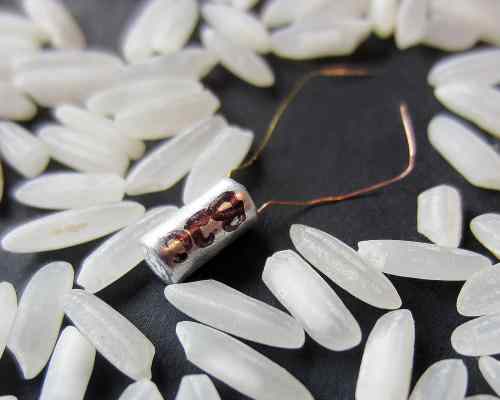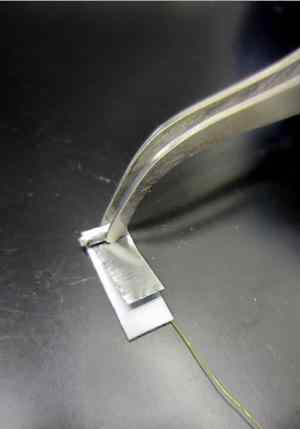
This rice-sized battery isn’t the smallest in the world, but scientists who want to track organisms can surely use it to analyze organisms’ behavior. Just how small this battery is is important to this breakthrough. If this battery were any smaller, it wouldn’t harvest enough energy to successfully track fish on their travels.
This microbattery will start being implanted in a large population of salmon that navigate through Pacific Northwest rivers and around the world. Scientists at the Department of Energy’s Pacific Northwest National Laboratory have detailed the battery’s creation process in the online journal Nature .
The lighter battery has a small transmitter that enables scientists to inject the device into younger fish that are not yet fully developed. Tracking fish throughout their life cycles would help researchers determine their health in the early stages of life. Previously, scientists could only determine data about battery-injected fish when their proximity to shore was nearby. The microbattery can power signals from great distances. This technology assists scientists in gaining information about the fish when their locations are far from shore.

The possibility of developing a small enough battery able to sustain power when injected into organisms was formerly unforeseeable. M. Brad Eppard, a biologist in the Portland District of the U.S. Army Corps of Engineers stated, “The invention of this battery essentially revolutionizes the biotelemetry world and opens up the study of earlier life stages of salmon in ways that have not been possible before.”
Lead developer, Jie Xiao helped formulate the battery’s design. Xiao implemented a “jellyroll” technique that is universally used when cylindrical batteries are formulated. The team of developers layered all battery materials by the process of lamination. The layers were then rolled. Each piece contained a separating material that was surrounded by a cathode of carbon fluoride and a lithium anode. This technique provides a wider space for the electrons to interact.
Xiao’s team has hand-made over 1,000 of these batteries through such a precise process. The machine developed to create the batteries looks like a pasta maker as it flattens the material and rolls the batteries into form.
Measuring six millimeters long and three millimeters wide with a slight weight of 70 milligrams, this battery holds 240-watt hours of energy per kilogram. The battery can power a 744-microsecond signal sent at three-second intervals. Compared to other comparable batteries, the power capacity of this microbattery is remarkable.
So far, the batteries have been fixed into 700 salmon for trial purposes. Results have proven the battery tagging to be successful. A patent for this technology has been filed, and is pending approval.
Story via Phys.org
Advertisement





